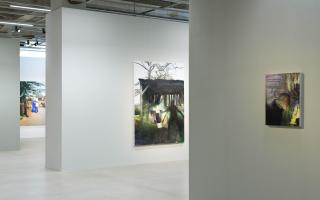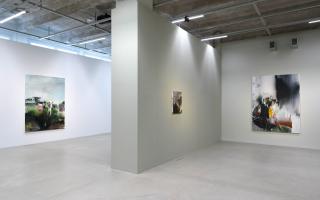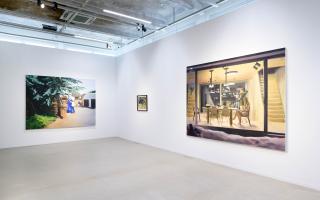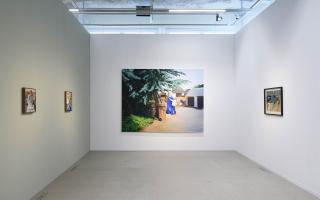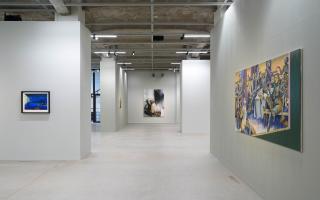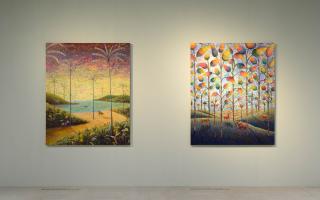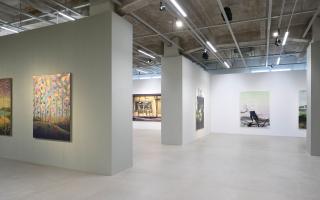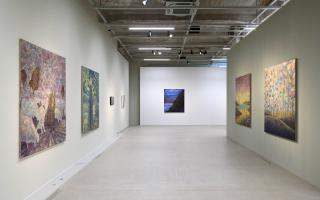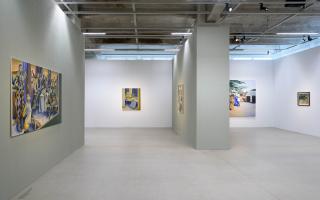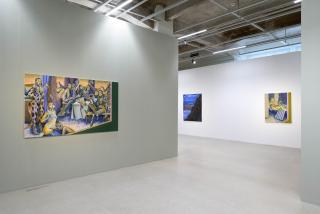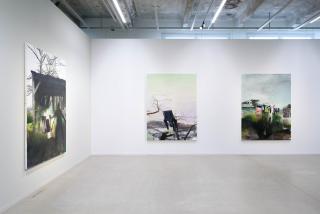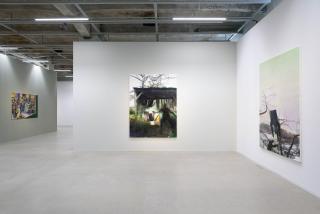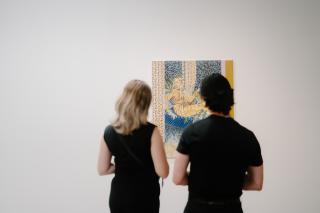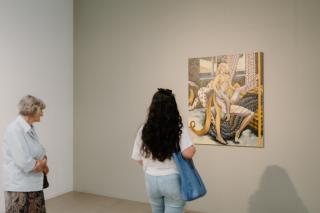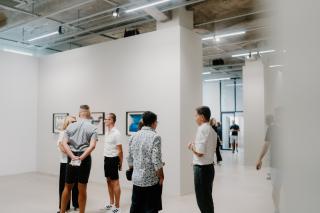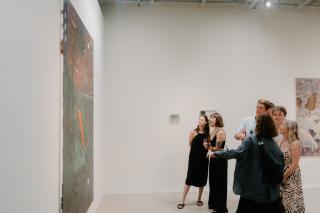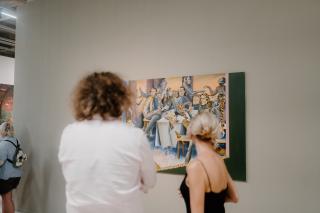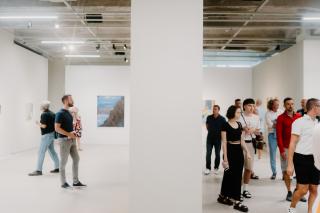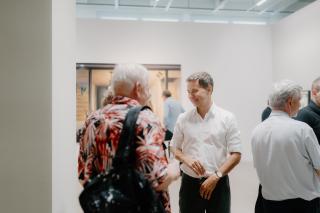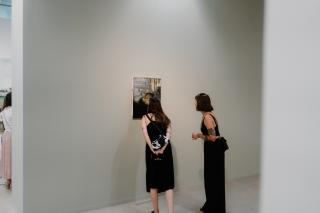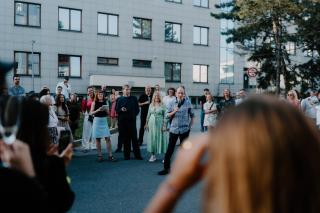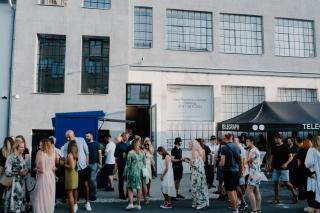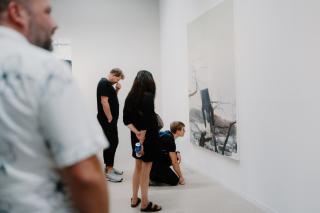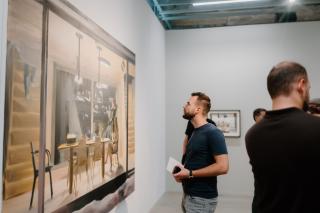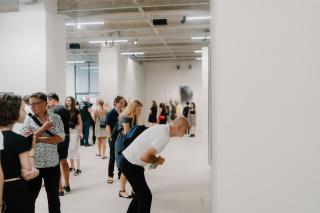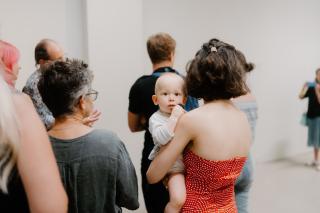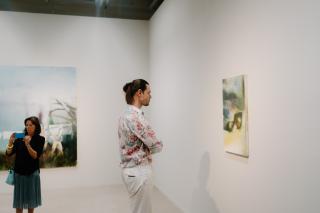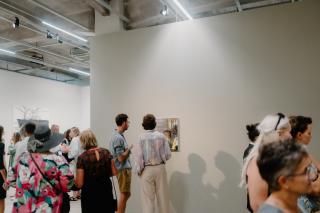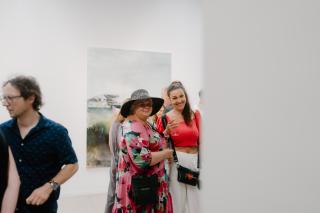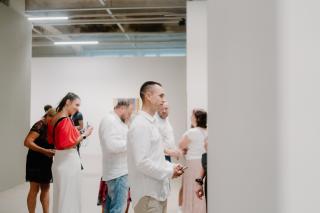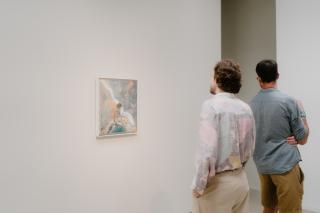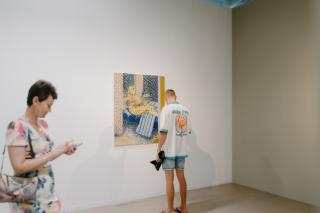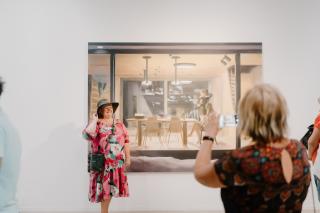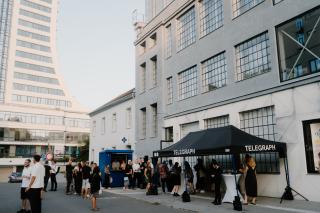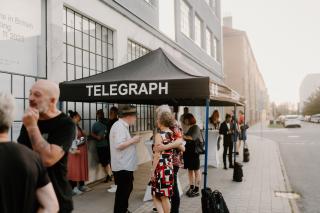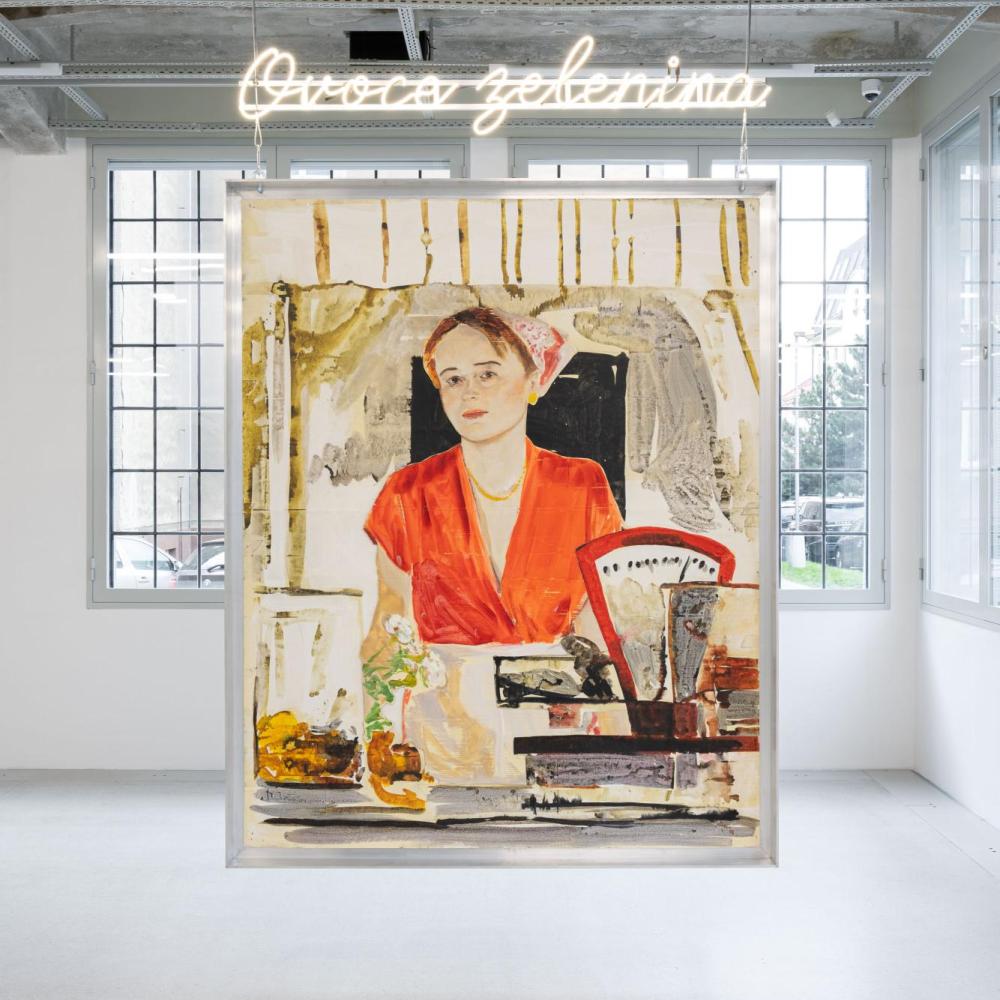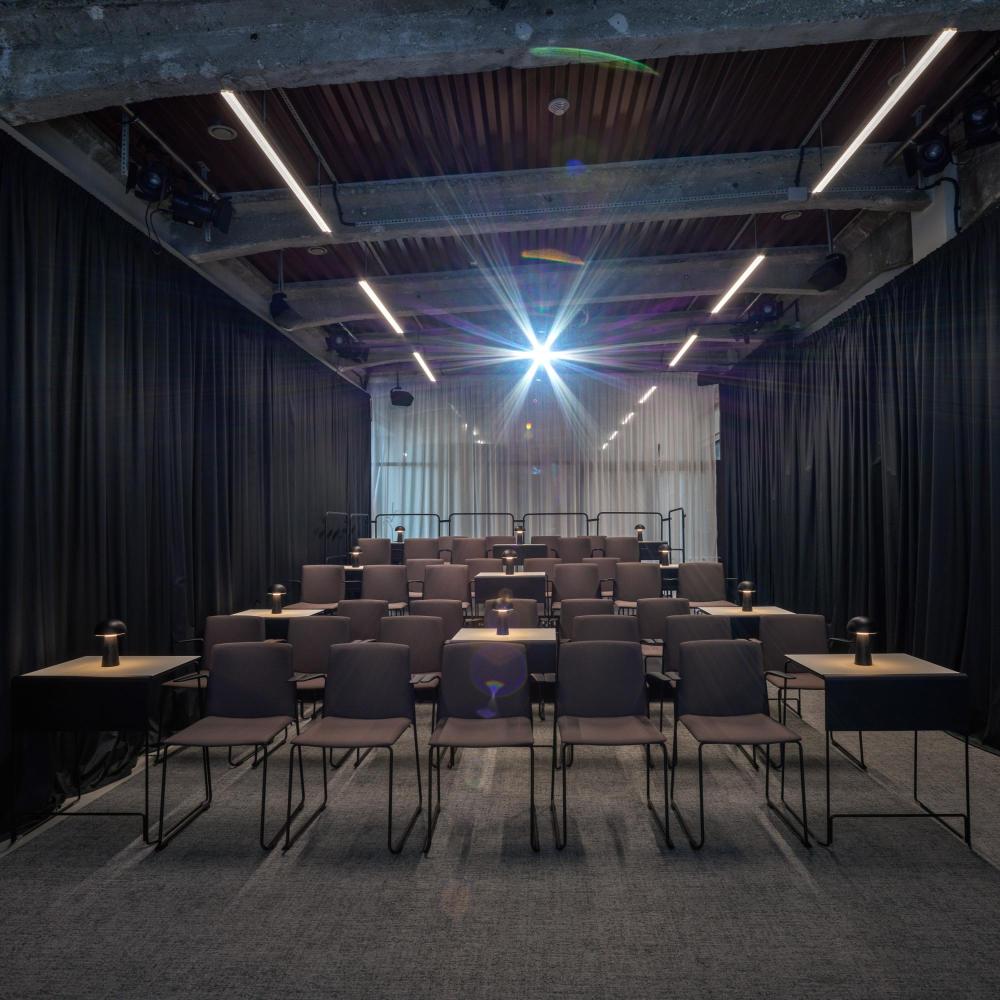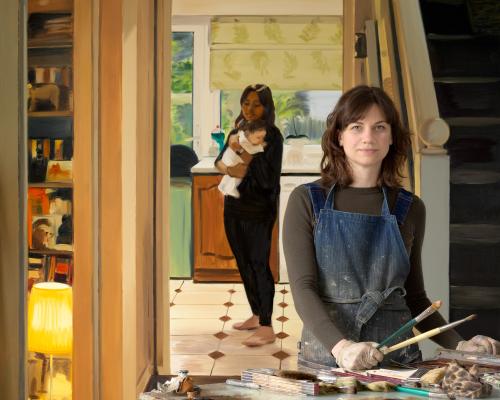
Caroline Walker (1982) is a Scottish artist, now living and working in London. Walker is a graduate of the Royal Academy of Arts, where she received her Master's degree in Painting. Caroline Walker is known for her paintings of female figures in everyday activities. In a very intimate way, she captures women in a way that society often does not see them - in a domestic setting, alone. Walker herself says that the most important aspect for her is to see a woman through the eyes of another woman, not through a gaze influenced by the rest of society. The paintings Walker produces in this way reflect the diversionary issues surrounding the economic, social and cultural status of women within contemporary society.
I'd like to start this interview in a very practical way – could you describe your creative process?
For a long time I had a very constructed approach to generating my reference material. I would hire locations, cast and clothe models, then direct them in the performance of particular characters or narrative threads of my own invention. This very staged way of working naturally came to an end about 6 years ago when I became interested in subjects connected to the experience of women living in London and my work began to take a more documentary approach which has continued.
These days my process involves observing women while they work, photographing them in a way which follows them in an informal, unstaged way. I might take hundreds of photos in a session, which I then work with as reference material in the studio to make small oil paintings on board, pencil drawings, and oil on paper studies in preparation for large-scale paintings. I tend to think of a subject as a body of work, or series, from the start, planning groups of paintings which will have a relationship to each other, rather than standalone works. In terms of a group, I might be considering a range of compositions which will include varying viewpoints, focusing on different tasks and at different times of day. I’m drawn to compositions where I might see a repeating shape or colour occurring across a scene, or something which has a cinematic feel.
Space as such plays an important role in your work. When and how did you begin exploring the relationship between the individual and space? What led you to do so?
It started in 2003 when I was still studying at Glasgow School of Art. I’d always been interested in making paintings of people, but they were kind of floating around in blank space. One of my tutors suggested I put them somewhere, and that started me off on a subject that’s sustained me for 20 years already. For me it’s a subject with endless possibilities for narrative, asking where this place is, what does it look like, who is there and what are they doing.
I’d like to pause for a moment on the role of (personal) space – I’ve heard many reactions to your artistic expression, some of the viewers felt almost inappropriate – as if they were invading the privacy of the characters on the screen. Is that your intention?
It depends on the specific painting. I'm certainly interested in the position of the viewer in relation to the subject and what that tells us about notions of public and private space and about how we look, particularly from a gendered perspective. In some paintings I am definitely trying to create a viewpoint which is voyeuristic, in others I want the gaze on the subject to be much more passive, and in some the subject looks back at us suggesting something quite different.
I was very interested in your exhibition entitled Lisa – for the unfamiliar, it was a series of drawings and paintings mapping the relationship between a mother and a newborn, here specifically capturing the relationship between your sister-in-law and niece. Are the characters – or their roles – in your paintings always real people, acquaintances of yours, or do you create a "fictional" universe for your other works?
The places and people in my paintings are nearly always ‘real’ but it’s only been in the last 6 or 7 years that these people have been seen in their own environment, and being themselves rather than playing a character. Since 2019 I’ve been focusing more often on people that are part of my family, or immediate day to day life. That’s included my mother, Lisa, and most recently the women who look after my daughter at nursery, or our health visitor, who is depicted weighing my baby son in ‘Sarah Weighing Laurie’ which is in the exhibition.
In the description of your monograph In Every Dream Home, the name of director David Lynch comes up in connection with influences on your work. Lynch is known for his emphasis on heavy atmosphere. Is atmosphere the fundamental thing you look for in your work?
I ask because you are seen by many as an artist who works mostly in conjunction with the feminist movement. So I'm wondering whether the representation of women is a symbol for you, or whether you work with the female figure in order to create a strong atmosphere – the representation of women in their own space certainly offers this.
I would consider myself a feminist, but the representation of women isn’t a symbol for me as such, more an enduring interest in representing women’s lives, which has been with me since childhood. I’ve always been drawn to pictures of women, and even as a little girl it was all I wanted to paint and draw. This started out in my earlier career as an exploration of archetypes and painting women as stand-ins for a particular type of female character. These days I’m more interested in making visible the sometimes invisible parts of women’s experience, particularly their working lives. Creating atmospheric, almost cinematic scenes has been a way of exploring both of these approaches to depicting women and the use of colour and lighting is a huge part of how I put together my paintings. I want to create spaces in the painting that turn the overlooked or ordinary into something that might make the viewer reconsider or pause to look again at the world around us.
In the Home series of works, the paintings are motivated by the fate of women trying to get asylum in London. Do you see your work as activist, drawing attention to social issues?
I don’t see it as activist as such because it’s not being made with a direct political agenda, but I am interested in reflecting aspects of contemporary society and asking questions through my paintings about how we live our lives.
To follow on from the exhibition of contemporary British painting at the Telegraph Gallery – curated by Jane Neal. Where did you meet Jane?
Jane and I first met in 2010 when she and curator/writer Matt Price came to my studio after Matt had seen my MA degree show at the Royal College of Art in 2009. Jane and I instantly had a connection and have worked together on many projects in the intervening years. She introduced me to several galleries, including GRIMM in 2016, who I’ve been working with ever since. She’s not only a great art matchmaker, I also met my husband through Jane!
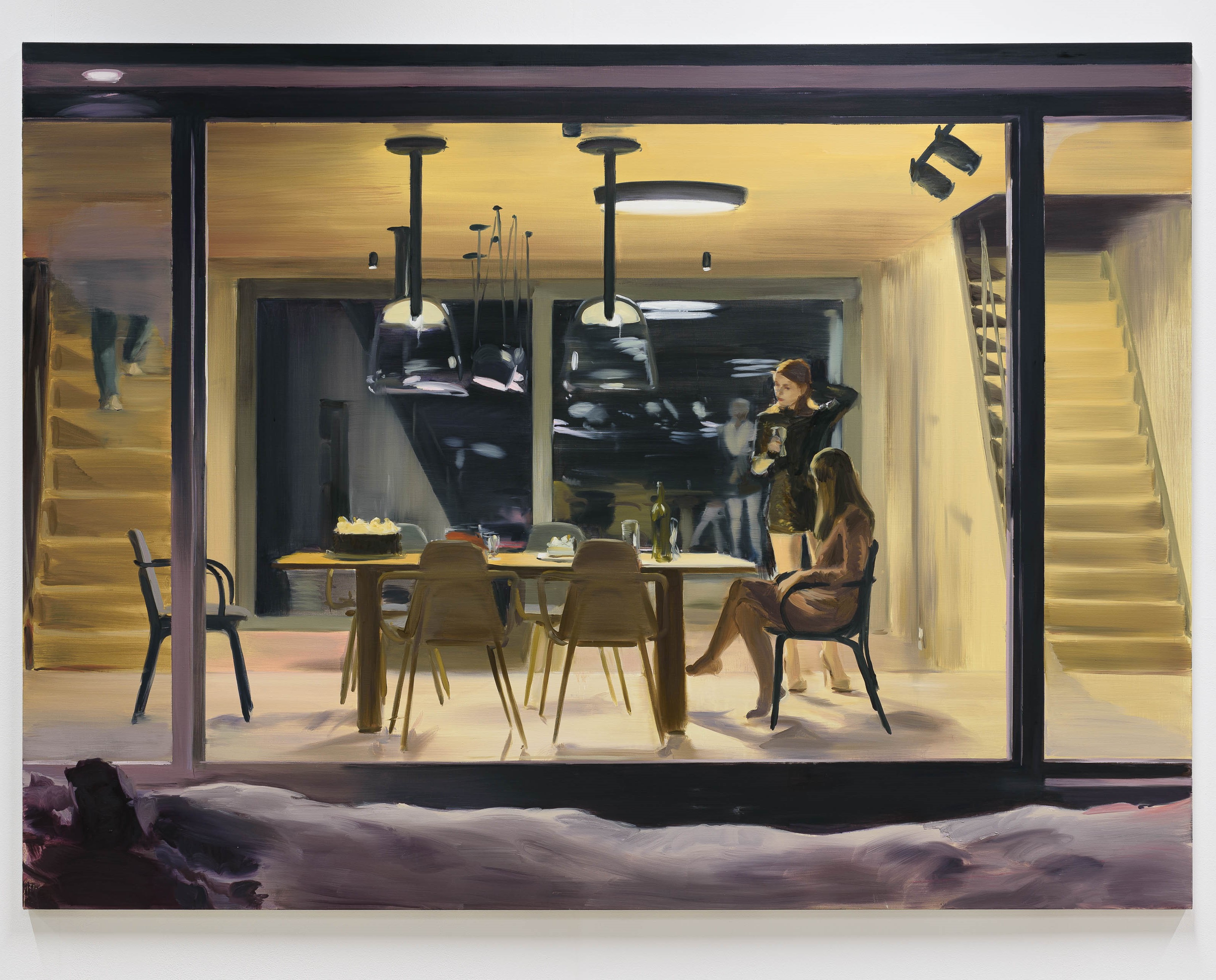
There is one painting in the Telegraph Gallery exhibition that shows a group of people in a living room. I dare say the painting is quite important to the owner of the Telegraph Gallery, Robert Runtak. I'm sure you know which painting I'm referring to. Can you describe how this painting came about?
‘Birthday Party’ is part of a series of paintings I made based on a photo shoot I did at Robert’s incredible house in the Czech mountains in February 2017. Robert already had two of my paintings, having been introduced to my work by Jane. He was keen to have more work and suggested that I might like to make something based on his house. I was very interested in contemporary architecture and one of a kind homes at the time and Robert’s house offered some exciting possibilities for potential paintings, especially with the setting of the snowy landscape surrounding it. We found 2 Czech models, a fashion model and her sister and I went clothes and prop shopping in Ostrava before we did a day of photography at the house, the idea for which was based around an imaginary party at the house. Jane also had a cameo role! It was a lot of fun, and I was really happy with the results. The house was formally very interesting and the lighting, especially once it got dark, gave the resulting paintings a very dramatic quality.
Thank you very much for all the answers. I just have one last question – what else can we look forward to with Caroline Walker?
Lots! I'm writing this as I wait in the airport to go to Amsterdam to celebrate the opening of ‘The Painted Room’, a group show I’ve curated at GRIMM, which brings together paintings on the theme of interiors by artists working in the UK.
I only work part time at the moment as I have 2 small children, but I’m taking inspiration from the demands of motherhood and starting a series of paintings about the women who are part of my children’s world, including those working in my daughter’s nursery. I’m currently working towards a solo exhibition at Ingleby Gallery, Edinburgh early next year.
Photo: Peter Mallet, Matěj Doležel
